In the symphony of the natural world, the vibrant and exuberant calls of parrots, cockatoos, and macaws stand out as audacious melodies that capture attention.
These avian species, known for their brilliantly coloured plumage and raucous vocalizations, have evolved to communicate with their surroundings in distinct ways.
The reason behind what is the reason that some birds like parrots, cockatoos and macaws have such loud cries is a fascinating blend of evolutionary history, social dynamics, and environmental adaptation.
Understanding the driving forces behind their cacophonous calls unveils the intricate web of factors that shape the behaviour and survival strategies of these charismatic birds.
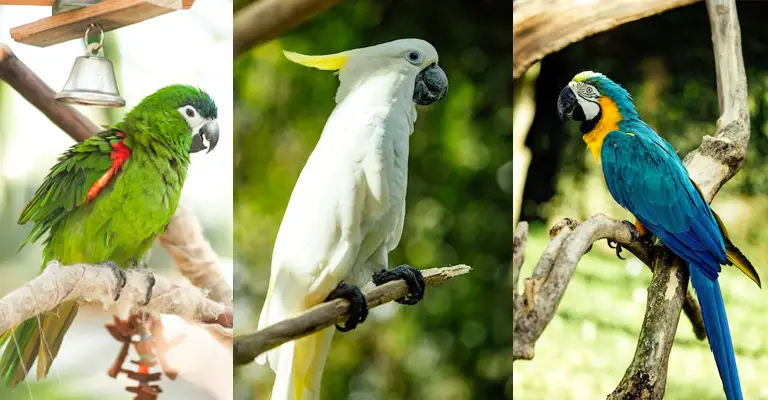
What Is The Reason That Some Birds Like Parrots, Cockatoos And Macaws Have Such Loud Cries?
Some birds, such as parrots, cockatoos, and macaws, have loud cries for various reasons. Here are some of them:
Communication
Birds use their vocalizations to communicate with each other, especially over long distances. They may use loud cries to signal their location, identity, mood, intentions, or needs to their flock members or mates.
Territory
Birds use their vocalizations to defend their territory from intruders or competitors. They may use loud cries to warn or challenge other birds that enter or approach their feeding or nesting areas.
Predation
Birds use their vocalizations to alert or alarm their flock members or allies about potential predators or threats.
They may use loud cries to scare away predators or attract the attention of other birds that can help them fight back.
Mimicry
Birds use their vocalizations to imitate or copy the sounds of other birds or animals, including humans.
They may use loud cries to learn from or interact with other species or to deceive or confuse them.
Enrichment
Birds use their vocalizations to express their emotions, preferences, or personality. They may use loud cries to show happiness, excitement, curiosity, boredom, frustration, or anger.
Attention
Birds use their vocalizations to get the attention of their owners, caretakers, or companions.
They may use loud cries to ask for food, water, toys, playtime, affection, or social interaction.
Habitat
Birds adapt their vocalizations to suit their habitat and environment. They may use loud cries to overcome the background noise of urban areas, forests, or grasslands.
Season
Birds change their vocalizations according to the season and the day-night cycle. They may use loud cries to mark the beginning or end of the day or to attract mates during the breeding season.
Health
Birds modify their vocalizations due to their health and well-being. They may use loud cries to indicate pain, illness, injury, stress, or discomfort.
How Do You Calm Your Birds From Loud Cries?
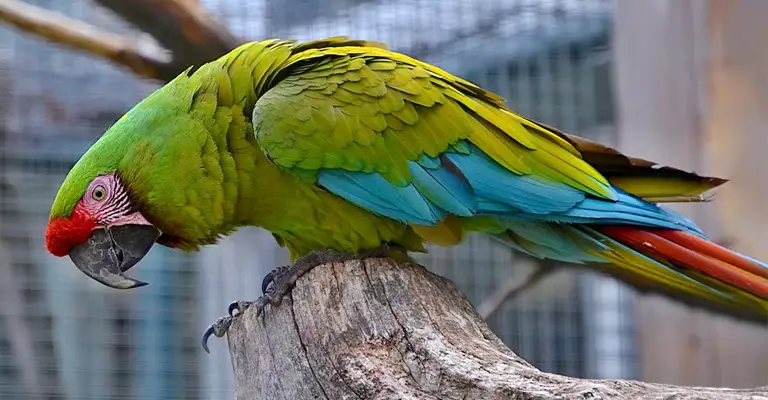
Birds can be very loud sometimes, and this can be annoying or stressful for you and your neighbours. However, there are some tips that can help you calm your birds from loud cries.
Here are some of them:
Understand The Reason Behind The Loud Cries
Birds have different reasons for making loud noises, such as communication, territory, predation, mimicry, enrichment, attention, habitat, season, or health.
Try to figure out what is triggering your bird’s loud cries and address the underlying cause.
Provide A Suitable Environment For Your Bird
Birds need a spacious and comfortable cage that has enough toys, perches, swings, and other accessories to keep them entertained and stimulated.
They also need fresh food and water, natural sunlight and darkness, and a clean and safe habitat. Make sure your bird has everything it needs to be happy and healthy.
Interact With Your Bird Regularly
Birds are social animals that need human companionship and interaction. Spend time with your bird every day, talking to it, playing with it, and teaching it new tricks or words.
Be gentle and patient with your bird, and avoid scaring or stressing it out. Reward your bird with praise or treats for good behaviour.
Let Your Bird Out Of The Cage For Exercise
Birds need physical activity to stay fit and happy. Let your bird out of the cage for at least an hour a day, and supervise it closely.
Make sure the room is safe and bird-proofed, and remove any potential hazards or predators. You can also provide some perches, ladders, or tunnels for your bird to explore.
Provide Your Bird With Baths Or Showers
Birds love water and enjoy bathing or showering regularly. This helps them keep their feathers clean and healthy.
You can offer your bird a shallow dish of water, a spray bottle, or a faucet for bathing or showering. Make sure the water is lukewarm and not too hot or cold.
Use Positive Reinforcement And Rewards
Birds respond well to positive reinforcement and rewards rather than punishment or scolding. If your bird makes loud noises, do not yell at it or hit it, as this will only make it more fearful or aggressive.
Instead, ignore the unwanted behaviour and reward the desired behaviour with attention, praise, or treats.
Use Distraction Techniques
Birds can be distracted by other sounds or stimuli that can divert their attention from making loud noises.
You can use music, TV, radio, toys, or other birds to create a pleasant background noise that can calm your bird down. You can also use a whistle, a clicker, or a bell to redirect your bird’s focus to you.
Use Calming Techniques
Birds can be calmed by soothing sounds or actions that can relax them and lower their stress levels.
You can use soft music, white noise, nature sounds, or classical music to create a peaceful atmosphere for your bird. You can also use gentle strokes, massages, or cuddles to comfort your bird and make it feel secure.
Consult A Vet Or An Expert
If your bird’s loud cries persist or worsen despite trying the above tips, you may need to consult a vet or an expert for advice.
Your bird may have a health problem that needs medical attention or a behavioural problem that needs professional guidance. A vet or an expert can diagnose the problem and suggest the best solution for your bird.
What Are Some Birds That Have Loud Cries?
Some birds that have loud cries are:
Parrots
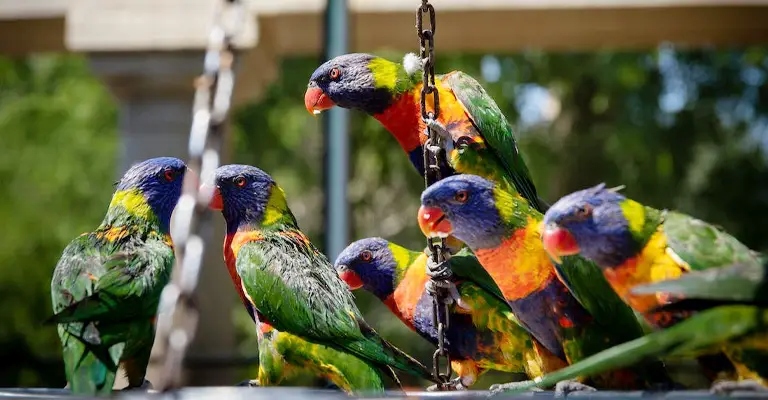
Parrots are a group of colourful and intelligent birds that belong to the order Psittaciformes.
They have strong and curved bills, zygodactyl feet, and the ability to mimic sounds. Parrots can make loud cries to communicate, defend their territory, alert their flock, or attract attention.
Cockatoos
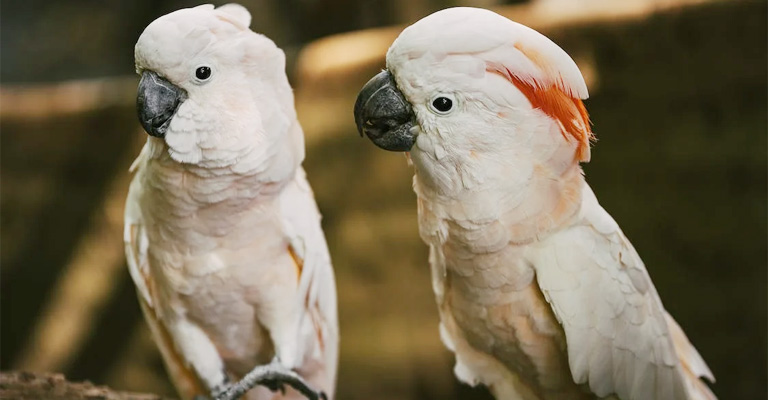
Cockatoos are a group of crested and mostly white birds that belong to the family Cacatuidae.
They have large and mobile crests, powerful bills, and long tails. Cockatoos can make loud cries to express their emotions, bond with their mates, or challenge their rivals.
Macaws
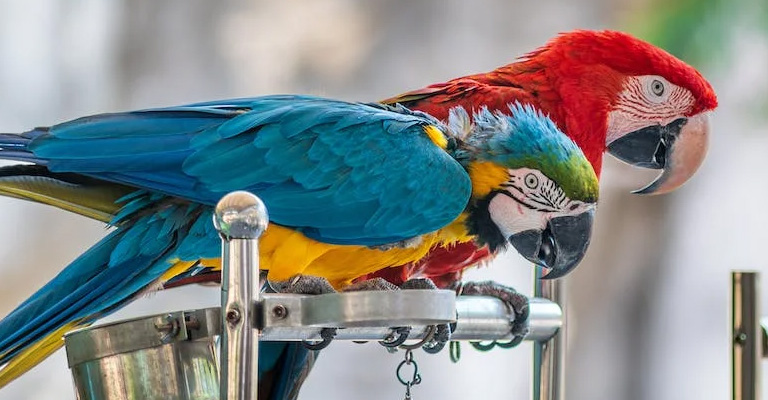
Macaws are a group of large and colourful birds that belong to the family Psittacidae.
They have long and pointed tails, strong and hooked bills, and bare facial patches. Macaws can make loud cries to communicate, mark their territory, or warn their flock.
Crows
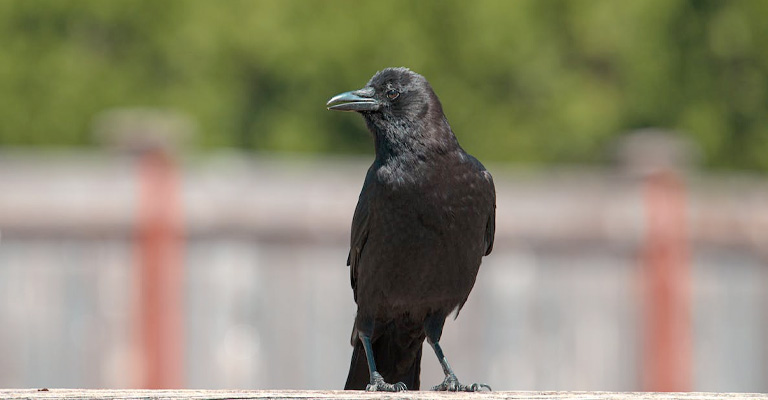
Crows are a group of black or grey birds that belong to the family Corvidae. They have stout and pointed bills, strong legs, and rounded wings. Crows can make loud cries to socialize, cooperate, or mob predators.
Hawks
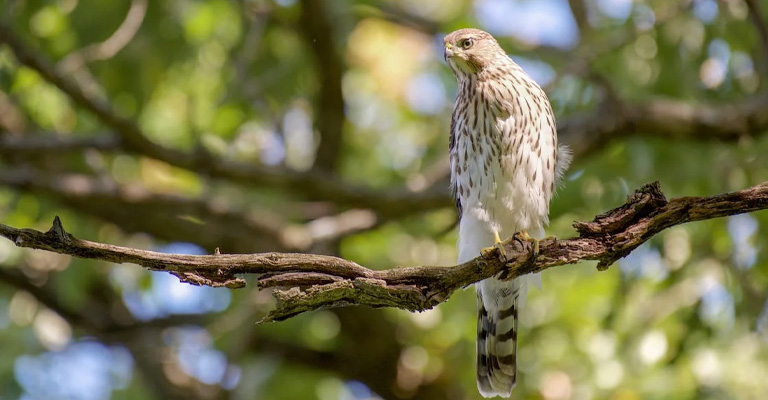
Hawks are a group of raptors or birds of prey that belong to the family Accipitridae.
They have sharp and hooked bills, powerful talons, and keen eyesight. Hawks can make loud cries to signal their presence, locate their mates, or intimidate their enemies.
Owls
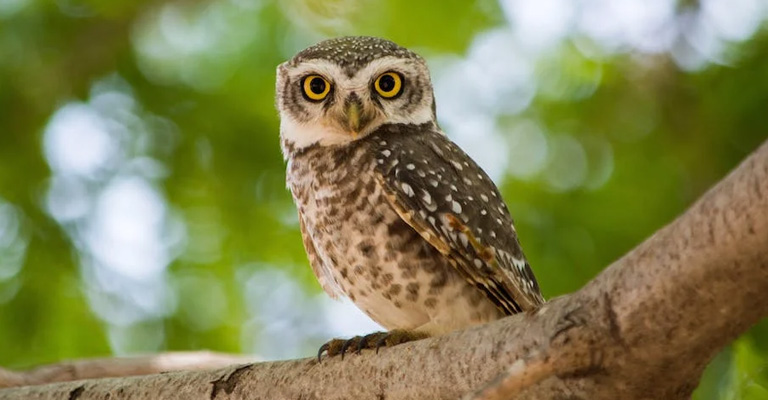
Owls are a group of nocturnal or crepuscular birds that belong to the order Strigiformes.
They have large and forward-facing eyes, flat and round faces, and asymmetrical ears. Owls can make loud cries to hunt, communicate, or defend their territory.
Peacocks
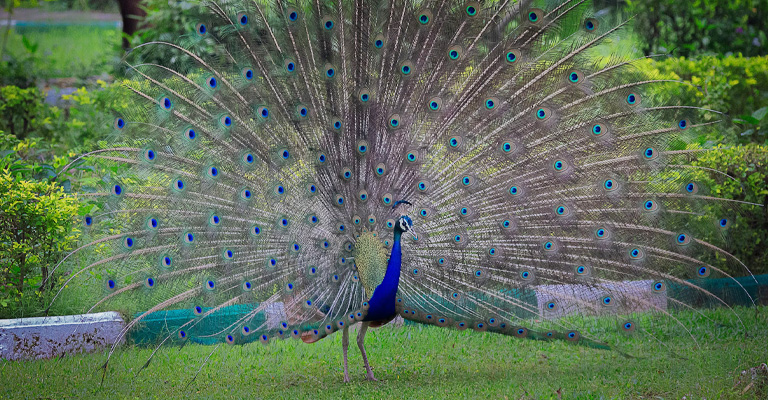
Peacocks are a group of large and colourful birds that belong to the family Phasianidae.
They have long and iridescent tail feathers, which they can fan out to display. Peacocks can make loud cries to attract mates, deter rivals, or alarm their flock.
Seagulls
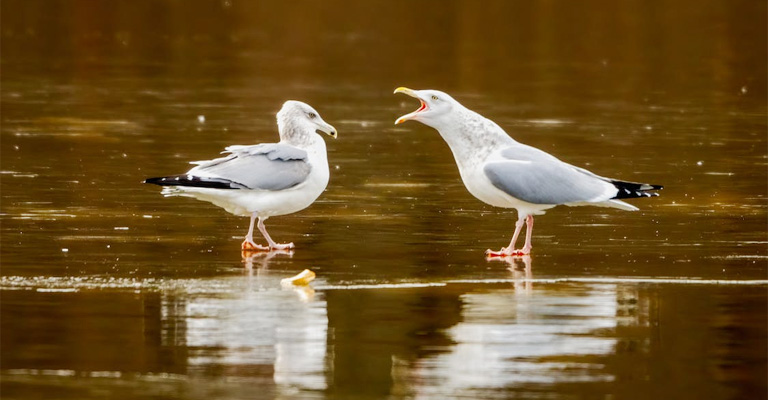
Seagulls are a group of coastal or marine birds that belong to the family Laridae. They have long and pointed wings, webbed feet, and yellow or red bills. Seagulls can make loud cries to scavenge food, coordinate with their flock, or warn of predators.
Songbirds
Songbirds are a group of small and perching birds that belong to the order Passeriformes.
They have thin and pointed bills, strong legs, and complex vocal organs. Songbirds can make loud cries to sing, communicate, or compete.
FAQ
These birds use loud calls for a variety of reasons, including communication across their large territories, establishing and defending their territory, and attracting mates during breeding seasons.
While many species within these groups are known for their loud calls, the intensity of vocalization can vary between species. Some are naturally quieter due to their ecological role and social dynamics.
Yes, loud calls can indicate distress or alarm in parrots, cockatoos, and macaws. They might use heightened vocalizations when they sense danger or feel threatened.
Many of these birds are highly intelligent and capable of mimicking sounds from their environment, including human speech.
They learn calls through observation, imitation, and practice, often adapting their vocalizations to suit their social context.
Absolutely. Loud calls help these birds communicate over vast distances in their natural habitats, locate each other in dense foliage, reinforce social bonds within flocks, and establish their presence in a competitive environment.
Conclusion
The resounding cries of parrots, cockatoos, and macaws form a part of the rich tapestry of nature’s communication. These birds have honed their vocalizations for reasons ranging from territorial defence and mate attraction to cohesive social bonding.
While their calls might seem deafening to human ears, they’re an embodiment of survival strategies refined over millennia.
As we appreciate the colourful personalities and vocal prowess of these avian species, we gain insights into the intricate relationships between birds, their environment, and their fellow feathered companions.
The loud cries that resonate through forests and tropical landscapes are a testament to the resilience and adaptability of these remarkable creatures in their quest to thrive in the wild.